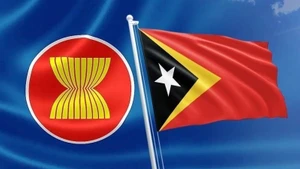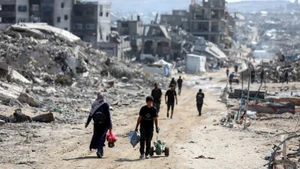According to the US Customs and Border Protection (CBP), since the morning of November 26, the vehicle and pedestrian crossings at the San Ysidro border gate have returned to normal. A day before, the US side was forced to temporarily stop all activities at the busiest border between the two countries, which deals with roughly 70,000 arrivals of vehicles and 20,000 arrivals of passers, after the Tijuana police dissolved a riot of migrants from Central American countries who rushed to the Mexican border region adjacent to the US. The US law enforcement officials were forced to shoot tear gas to prevent people from trying to breach the security fence to cross into the US territory.
This is not the first time that the San Ysidro border crossing has witnessed tensions and violence related to migrants occurring in the Mexico-US border. The pressure to protect the southern border has been on the rise for the administration of President Donald Trump since mid-October, as an influx of thousands of migrants, wishing to live the “American dream”, departed from the Honduras city of San Pedro Sula for Mexico’s Tijuana city to seek ways into the US. The majority of the migrant caravan came from countries in the “northern triangle” of Central America, including El Salvador, Guatemala, and Honduras, where poverty and violence are forcing many people to flee their countries and pursue dreams of a new life in the US. According to Mexican data, approximately 8,000 people have joined the caravan into Mexico, and are now gathering at the border region adjacent to the US.
The increasing influx of immigrants towards the US border has driven President Donald Trump to become “restless”. Adhering to tough measures in the issue of illegal immigrants, President Trump once declared the caravan of migrants, consisting of hundreds of criminals, as a “state of national emergency”, thereby resorting to the military to cope with the situation, despite protests against the plan to deploy troops to the southern border. In order to put pressure on the “upstream” governments of the migrant caravan, Washington has cut aid to El Salvador, Guatemala, and Honduras, requesting that the three Central American countries and Mexico take measures to prevent the influx of migrants to the US. The currently fractured relationship between the US and Mexico has become increasingly worse due to the issue. The US criticised Mexico for not stopping the migrants from crossing into the US, while the two sides have yet to agree on appropriate measures to address the situation.

A group of Central American migrants climb the border fence between Mexico and the United States, near El Chaparral border crossing, in Tijuana on Sunday. (Photo: Getty)
The latest tension at the San Ysidro border crossing was the “last straw”, as just days before, President Trump ordered the closure of the border with Mexico for a short period of time aiming to facilitate the installation of security fences to prevent illegal immigrants from entering the US. He also warned of the possibility of completely closing the US’s southern border from early December if the issue of migrants is not resolved. Together with tightening security, President Trump also proposed allowing the military to be “more aggressive” with the migrant caravan currently camping in Mexico near the US border, which he claimed includes at least 500 dangerous criminals. The White House boss also threatened to “close the government” if the US Congress fails to meet the December deadline for the approval of the budget for the building of a border wall with Mexico, a project that he has been pursuing since the early days he came to power.
In reality, it is a difficult task to solve problems related to the current “migrant caravan” in such a short period of time. According to observers, what Washington lacks is a package of master measures, including an immigration policy that fits the context and ways to ensure border security and national interests but without violating humanitarian principles towards migrants and refugees and not denying international cooperation in such a sensitive issue.
Not only facing international protests, President Donald Trump has not received domestic support for strong measures against the migrants or the plans to build a “border wall” with Mexico. Security developments in the southern US border have shown the deadlock of President Donald Trump’s administration in finding a way out of the crisis of immigrants from Central America.
















